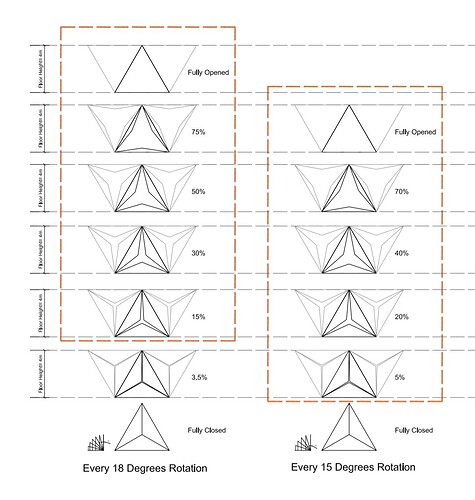Hi everybody
I want to do an annual energy modeling for a complex kinetic shading device that is changed the opening ratio based on the sun position. can I use honeybee for energy modeling?
Technically yes but it takes a lot of work to make it happen. In most cases you can actually simplify the effect of the complex shading into a list of shading coefficient numbers and use that instead of the geometry itself.
Hi @mostapha,
Just wonder under what block, in E+, you supply the shading coefficient values? Was searching but didn’t find.
Thanks,
-A.
thank you for your response
How can I do that? is there any tutorial in this case?
Hi @AbrahamYezioro, You can apply it to a shading face that you can create in front of the window with a small distance.
The object is Shading:Building:Detailed and the field is Transmittance Schedule Name.
Shading:Building:Detailed,
Shading face, !- Detached Shading
ShadingTransmittance, !- Shadowing Transmittance & Schedule - This is what I meant.
4,
x1, y1, z1,
x2, y2, z2,
x3, y3, z3,
x4, y4, z4;
This can be added to the idf file using extraStr input.
So obvious …
Though i’m not sure if you can apply a list of Shading Coefficients for each hour. For what i see you can give just one number.
I’ll try and report here if succeed.
Thanks @mostapha.
-A.
Hi Abraham, Since it is a schedule you can use any of EnergyPlus schedules. You can use Honeybee schedule components or just write down the schedule. In this case I would create use Radiance to calculate the shading coefficient and then create a csv schedule from the numbers based on different positions of the shading at different timesteps. From the page above:
Field: Transmittance Schedule Name
The name of a schedule of solar transmittance values from 0.0 to 1.0 for the shading surface. If a blank is entered in this field, the transmittance value defaults to 0.0, i.e., the shading surface is opaque at all times. This scheduling can be used to allow for seasonal transmittance change, such as for deciduous trees that have a higher transmittance in winter than in summer. Transmittance based on time of day can also be used—a movable awning, for example, where the transmittance is some value less than 1.0 when the awning is in place and is 1.0 when the awning is retracted.
Perfect @mostapha,
I was thinking using the sunlightHours component each hour (probably one day per month) and see the percentage of the window area exposed to the sun.
This is a
what i used to do using my own energy simulation software (before adopting E+) and it was fine.
Thanks,
-A.
You are the expert! ![]() This actually makes a lot of sense as it is just the coefficient.
This actually makes a lot of sense as it is just the coefficient.
See my response to Abraham below.
Dear @AbrahamYezioro
If you want to make dynamic changes of your shading system on hourly basis, the best way is to use EMS within Honeybee … in case if you want to make your shading system sensitive to indoor condition …
Cheers
Amir
Dear Mr. Rudsari,
I am studying about kinetic façade and its effect on thermal comfort. According to your solution about calculating shading coefficient, should I use the Radiance software? Could you please explain about this way a bit more?
How can I export this coefficient based on SunPath from Radiance? And also, to which components of Honey Bee, I can import this data?
Your prompt attention to this will be appreciated.
Faithfully yours,
Farnaz Amini

